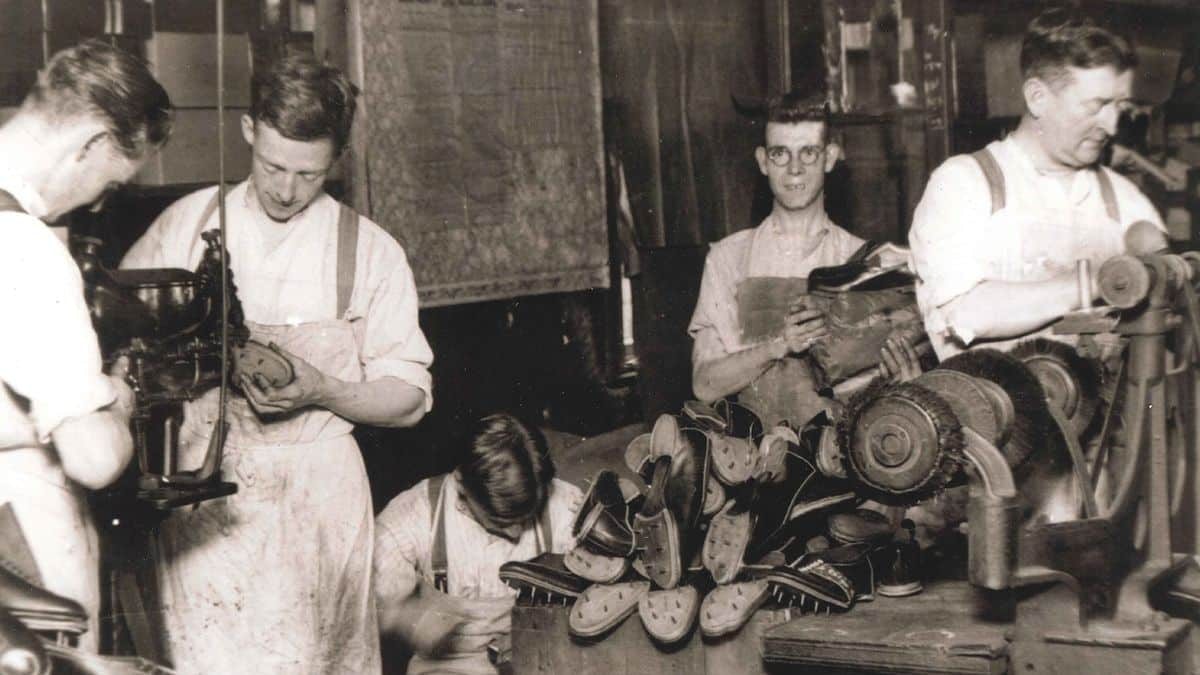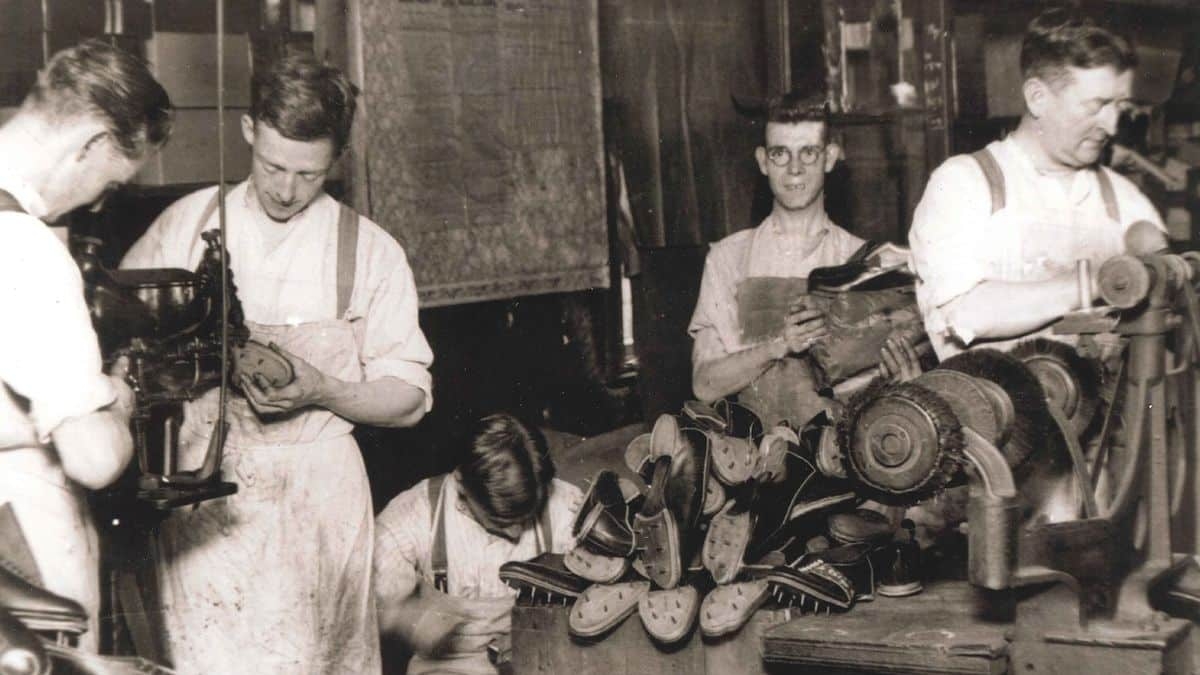
The United Kingdom has always been a champion of the entrepreneur – a nation proud to boast fervent discovery and growth. Giant corporations of the old and modern alike have emerged from its shores – conquering markets around the world with their innovative spirit.
Nevertheless, amongst the pantheon of the greatest are few that have shaped the contemporary world as much as Joe Foster’s company; Reebok. Foster takes us through his journey from humble beginnings to a revolution in the way we look at and use shoes for daily life and athletic-pursuits alike.
DDW was honoured to interview the great entrepreneur and discuss the path to success and his recently released biography “Shoe Maker” on the birth of one of the world’s greatest brands.
You are one of the most successful British entrepreneurs in contemporary history. Could you tell us how you got started and about your journey?
We need to start with my grandfather, also called Joe Foster back in 1895. He was a keen runner and a member of Bolton Primrose Harriers. Not a good runner from all accounts, but having learned cobbling skills from his grandfather Sam, he set about making himself a pair of ‘pumps’ with spikes in the bottom. An idea that was to transform his chosen sport of Athletics.
The fact is his ‘pumps’ moved him up more than a few places in running events
got a lot of attention. The attention was followed by requests – if not demands –
from his club mates. And that demand was to grow throughout the North West of the UK. It grew alongside his cobbling business, until eventually taking over as J W Foster (athletic shoes).
Further, Alf Shrubb’s 3 world records in one race in 1904 at Ibrox Park Glasgow had a big impact in influencing athlete’s to wear Foster’s pumps. There is no doubt that Joe understood the influence of having winners wear his shoes.
In the 1920’s the influence of Liddell, Abrahams and Lord Burlegh had on other athletes is immeasurable. They were the athletes that the film ‘Chariots of Fire’ immortalised Unfortunately, we don’t have any figures from the 1920 Olympic Games, but do have an old letterhead from the 1920’s, on which is printed ‘Official Makers to the Olympic Teams in Antwerp in 1920’ That does indicate that Joe had some arrangement with the Olympic organisation.
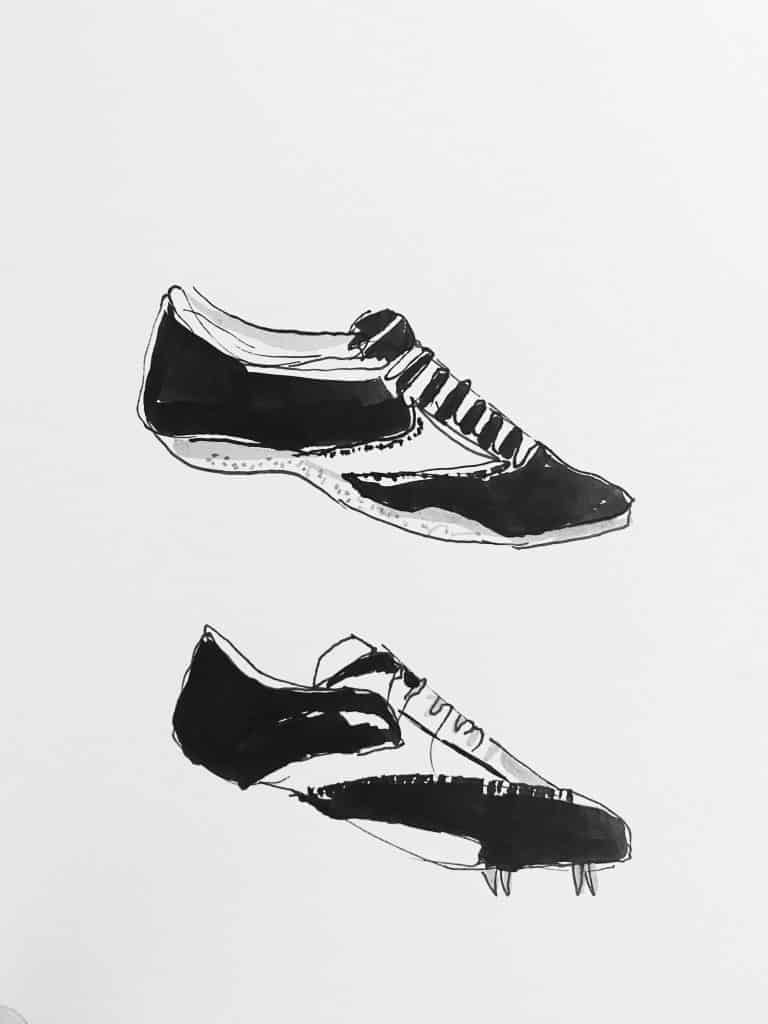
The letterhead also lists 96 Football and Rugby teams supplied by Foster’s., including Man U, Man C, Liverpool, Everton and Arsenal. Only Chelsea and Tottenham are missing, although I do remember in my days working at Fosters in the1950’s, addressing a package to Tottenham Hotspur.
We also have it in print that Joe was supplying most teams competing in the 1924 Olympics, including the German and USA teams.
Unfortunately, Joe died in 1933 leaving his business, now called J W Foster & Sons in the hands of his sons Jim and Bill – father and uncle. Regrettably they were not good business partners, which was alright for production, but it left the business without direction and planning for the future.
I have no idea what caused their feud, but until her death grandma Maria kept a lid on it. But, after her death there were many heated moments, ending in days of not speaking – just avoiding each other as much as possible.
My brother Jeff joined J W Foster & Sons in 1948 and I followed in 1952. However, we were both called to do National Service in 1953, returning to the family company in 1955 Jeff was in Germany and saw Adidas and Puma in their own market.
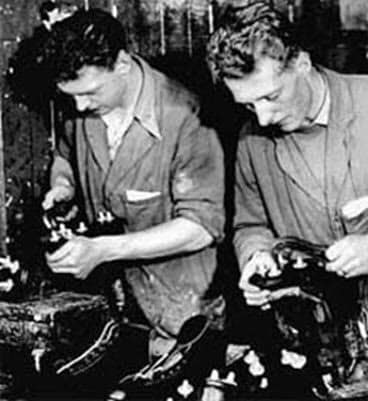
On Jeff’s return he was enthusiastic about what Fosters should be doing. But, as with my efforts, it fell on the deaf ears of our feuding father and uncle. Although we didn’t leave until late 1958, the writing was already on the wall in 1956.
Both Jeff and I decided we needed to learn more about shoemaking and signed on at college for evening classes. But bringing this extra knowledge to Fosters couldn’t bring father and uncle Bill together. We even tried to get our father to help set up a separate company, but the answer was ‘Bill won’t live much longer and when I die it will be yours’. Our reply – ‘We don’t want to see you die and when you do it will be too late – there will be no business’.
We had no choice but to leave Fosters and begin our own story, which did not go down well with my Father.
We have to ask – although Reebok is one of the world’s most recognised brand names, few know what means. Could you tell us a bit about the story behind name, its origin and the iconic stripes in the logo?
It’s 1958 and our new company, then called Mercury Sports Footwear, is about to take
off, but 18 months into our new venture we are advised by our accountants to register our name to protect it for the future. To do this I visit a Patent Agent in Manchester.
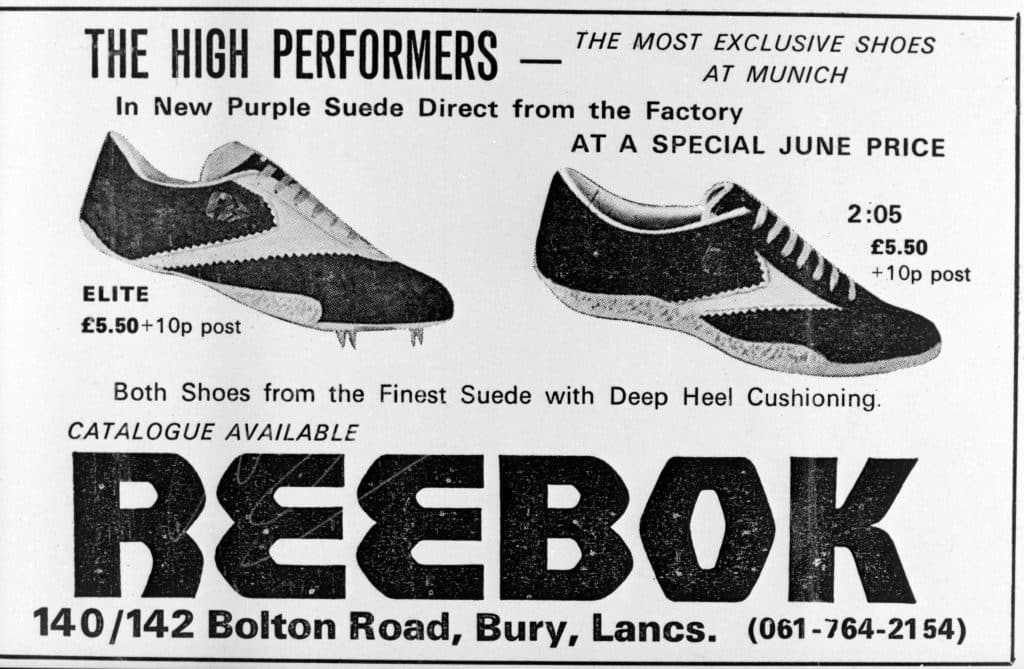
Shortly after my visit, he informs me ‘Mercury’ is already registered for footwear, by Lotus and Delta who offered it to us for £1,000 (a sum of money we simply did not have). Following this – our Patent Agent advises a change of name, but to bring him at least 10 options to check. That in itself is a challenge. With our wives, Jeff and I start the process and end up with lots of animals and bird names, including one I found in an American Websters dictionary I had won as a prize when I was 8.
Reebok – “a light brown South African Gazelle” (The English spelling is Rhebok). Collectively we decide that’s the one we all like and as it turns out – it is the only one that was not registered. A short time later, Adidas decided our two stripes with a T bar was infringing their three stripe design and threatened to sue.
We were flattered that Adidas would consider us a threat and set about redesigning our side support into an arrow or wing shape, now called the ‘Vector’, influenced by the British Airways tail fin logo. This also led to me to thinking about a new logo, which I designed using the arrow shape to form a star, which is now known as the ‘Starcrest’.
The shoe business has evolved enormously since you began in this industry. What were the key innovations that got us to the modern sneaker business and do you think of the industry today?
The running shoe market in the UK was comparatively small and I knew we needed to break into the US market to take advantage of the massive boom in road running being driven by Runners World magazine.
Runners World had an annual ‘shoe edition’, which gave ‘star’ ratings to shoes. I knew if we could produce a shoe to get the top 5 star rating, that would be the key. We had produced our ‘Aztec’ road shoe as part of our ‘Gold Range’ in 1978 for the Edmonton Commonwealth games, with Runners World in mind. I had been attending the NSGA show in Chicago since 1968, with limited success in finding a US distributor, but now in 1979, I had the key – a potential 5 star shoe.
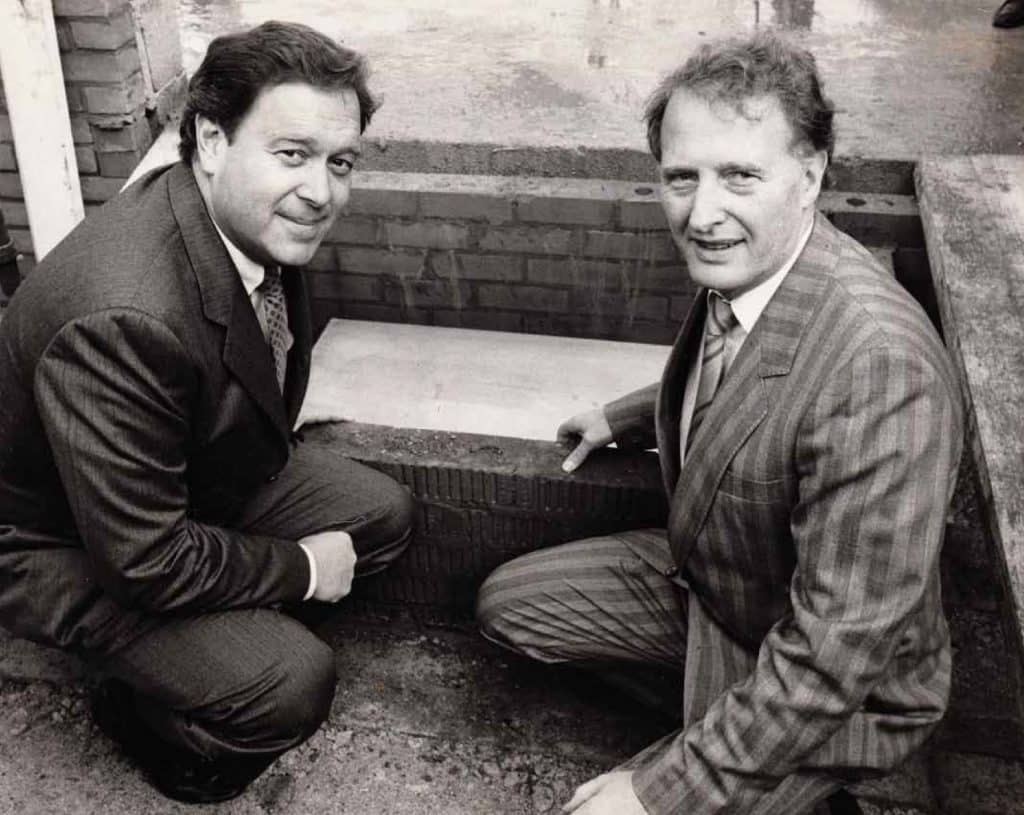
It got a lot of attention, but we had to wait from February till August for the Runner World rating edition. We got the 5 stars for Aztec and for our other two shoes, a spike we called Inca and a road racing shoe called Midas. That opened the door and introduced Paul Fireman to the brand and the setting up of Reebok USA.
What do you make of ‘fashion sneakers’ like Kanye West’s Yeezy’s and the whole ‘sneaker head’ trend?
We need to go back a long way to see the origins of sports influence on street fashion, from replica team shirts, to training shoes. The trend has continued as has the influence of social media, so now we have the new fashion icons putting their name on sneakers all driven by sport.
You were one of the few brands that championed women athletes from very early on, can you tell us how that came about and how that has impacted the brand?
Some two years after finding the key to the US market with our ‘Aztec’ road shoe, the Reebok ‘tech’ rep for California Angel Martinez asked his wife Frankie what was so good about these ‘Aerobic’ classes that she and her girls friends were finding such fun.
It was simply exercise to music, focusing on women, right there in Los Angeles. Angel, decided to take a look and joined Frankie at one of her classes, where he was to observe most of the women were exercising barefoot. Freestyle was born, which was a shoe with a glove leather upper and a cushion sole. The women loved it so much that, even with some early upper failures, it became an icon.
Jane Fonda was inspired to wear it when doing her videos and Cybil Shepherd wore orange high tops at the Emmy awards. It was a sports shoe specially made for women and suddenly demand drove Reebok’s revenues from 30 million dollars to 900 million dollars in 4/5 years, overtaking the revenue of Nike and Adidas to make Reebok the number 1 sports brand.
What would you say was the key to Reebok’s company culture?
The brand enjoyed such a rapid success once we had achieved the US market breakthrough in 1980, which was to be sustained through to the mid 90’s, that a culture of success developed, as like minded people were drawn to the company.
What advice would you give others entering the sneaker or shoe business today? Are there some key mistakes or pitfalls you experienced that you would warn against? Some key learnings?
The sports shoes business has changed incredibly since Jeff and I decided to set up Reebok, but I’m sure the problems we faced are similar, if not the same, that exist today. Anyone starting a sports shoe company today would, like we did, find it difficult.
As a small start up it is necessary to find a niche and have a lot of luck. Reebok arrived at the time when sport was growing and that growth has continued. Back in 1958 the shoes were worn for performance only, which over the years started to be worn on the street. Now sports shoes have become fashion, so you need to know where your company would be focused. We made mistakes, or were they simply problems, so looking back its hard to say if they could have been avoided, but it’s how you respond that counts.
How do you know where to find opportunity in an ever more crowded marketplace? Did you ever have run-ins with Nike’s Phil Knight or Adidas’ Adolf Dassler?
There will always be opportunity – you find it under the mushroom, but first you have to find the mushroom. I never had any contact with Phil Knight, but I did meet Jeff Johnson and exchanged some exciting experiences. As for Adidas, they did threaten to sue over our side striping, which they claimed was an infringement of their three stripes – so we changed.
What was it like selling the business to competitor Adidas after growing it from scratch? Was this a difficult transition or decision?
I had sold Reebok and retired 15 years before Reebok was sold to adidas. My decision was to allow the brand to follow the money, which was necessary to take advantage of the US opportunity. Difficult yes, but it achieved the desired result.
Is there any other advice that you would like to impart on entrepreneurs today?
You must love your brand with a passion, but be prepared to share the journey to achieve your dream.
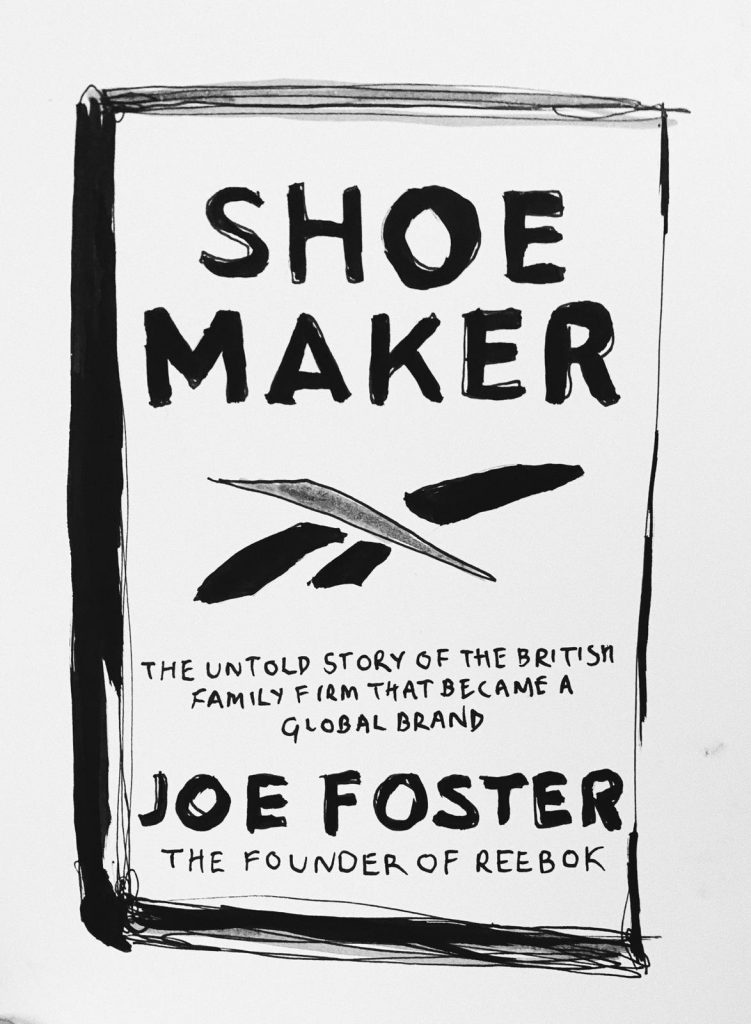
How can our readers buy your book?
The book is available globally from Amazon and all leading bookshops. However, signed and dedicated books can only be obtained from our website JW Foster Heritage

